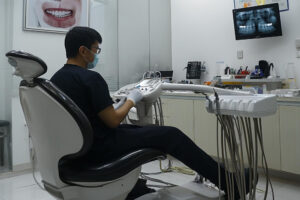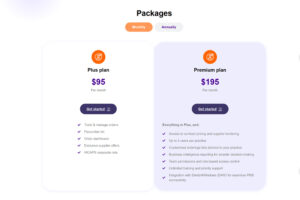In the ever-evolving landscape of dental practice management, making data-driven decisions is no longer a luxury—it’s a necessity. Among the most impactful strategies is the ability to predict next year’s savings using intelligent procurement forecasting tools. When executed properly, these tools can optimise supply budgets, reduce waste, enhance efficiency, and unlock significant time savings across multi-site clinics or solo practices alike.
So, how can dental practices accurately estimate future costs, improve financial foresight, and prepare for the year ahead?
What Is Procurement Forecasting and Why Is It Crucial for Dental Clinics?
Procurement forecasting refers to the process of predicting future purchasing needs and costs using historical spend data, consumption trends, supplier behaviours, and seasonal demand fluctuations.
For dental practices, procurement forecasting is a strategic function that helps:
- Minimise unnecessary stock or over-ordering
- Prevent supply shortages or order delays
- Align inventory levels with patient demand
- Identify future spending patterns early
- Strengthen supplier negotiations through data-backed insights
Effective forecasting contributes to next-year budget accuracy, allowing practices to proactively manage their financial planning.
What Data Is Used in Forecasting Next Year’s Savings?
To build an accurate savings forecast, reliable data inputs are essential. Forecasting platforms typically pull from a variety of data sources to generate their predictions:
- Historical Spend Data: Previous 6–12 months of procurement costs by category or supplier
- Usage Trends: Average consumable usage per patient or per procedure
- Inventory Levels: Stock on hand, reorder thresholds, and turnover rates
- Supplier Cost Trends: Pricing fluctuations, discounts, and surcharges
- Practice Growth Metrics: New patients, procedure volume, or location expansion
- Seasonality: Identifying high and low periods of demand
- Inflation Estimates or Price Changes: Adjusting for forecasted cost increases
These inputs allow the tool to calculate projected spend, expected savings, and areas of potential waste reduction.
How Are Forecasting Models Built for Dental Practices?
A modern procurement forecast engine uses a blend of machine learning, statistical modelling, and trend extrapolation to predict future outcomes. Here’s how the system typically works:
- Analyse historical data to identify consumption patterns
- Segment procurement into key product categories
- Predict future demand using time series or regression models
- Simulate cost scenarios using expected price changes
- Generate forecast dashboards with multiple outcome pathways
The system then recommends optimal ordering volumes, reorder dates, and supplier selections to maximise efficiency while controlling costs.
What Types of Savings Can Be Predicted?
When dental clinics use forecasting tools properly, the savings potential is multifaceted.
Types of Savings:
- Direct Cost Reduction:
- Better supplier terms via consolidated orders
- Reduced emergency orders or rush fees
- Avoided Overspend:
- Less wastage due to expired or unused stock
- Purchasing only what is needed, when it’s needed
- Efficiency Gains:
- Time saved from manual ordering or spreadsheet tracking
- Automation of reorder workflows
- Inventory Optimisation:
- Right-sized inventory per location or procedure type
What Are Some Typical Forecast Scenarios?
Forecasting tools often allow users to model various “what-if” scenarios based on different assumptions. Here’s a breakdown of common simulations:
| Scenario Type | Forecast Assumption | Projected Savings Outcome | Key Consideration |
| Base Case | Maintain current usage and pricing trends | Moderate savings | Predictable outcomes |
| Optimistic | Increase discounts / reduced wastage | Higher savings | Dependent on supplier terms |
| Conservative | Account for inflation or usage spikes | Lower savings | Builds risk tolerance |
| What-if: +10% Usage | Increase in patients or procedures | Spend increases, limited savings | Requires stocking strategy |
Such forecasting functionality allows practice managers to prepare for various possibilities while maintaining cost control.
What Attributes Define an Effective Forecasting Tool?
When selecting a forecasting solution, dental clinics should evaluate the following attributes to ensure it fits within their operational framework:
- Forecast Horizon: Monthly, quarterly or annual forecasting windows
- Forecast Accuracy: Margin of error, confidence levels, and backtesting results
- Scenario Planning: Ability to model multiple cost outcomes
- Inventory Granularity: Per SKU, category or clinic location
- Alerts & Thresholds: Notifications for spend anomalies or budget overruns
- Integration Capability: Sync with PMS, inventory, or accounting software
- Visual Outputs: Interactive dashboards, charts, and downloadable reports
- Permission Control: Multi-user access, with role-based permissions
How Can Dental Teams Use Forecasting for Strategic Budget Planning?
Using forecasting to shape next year’s budget isn’t just about cutting costs. It’s about empowering smarter decisions:
- Set realistic annual procurement budgets by category
- Model cost scenarios for expansion, new equipment or supplier changes
- Prevent budget blowouts with real-time alerts and adjustments
- Improve financial confidence when presenting forecasts to stakeholders
With predictive visibility, practice owners and procurement managers can anticipate financial needs long before challenges arise.
What Might a Forecast vs Actual Spend Table Look Like?
An effective forecast model should include comparative analytics between projected and real outcomes.
| Month | Forecasted Spend | Actual Spend | Variance | Projected Savings | Confidence Level |
| Jan | $14,500 | $14,900 | +$400 | $1,100 | ±4% |
| Feb | $13,200 | $12,800 | -$400 | $1,400 | ±3% |
| Mar | $15,000 | $15,500 | +$500 | $900 | ±5% |
| Apr | $14,700 | TBD | TBD | $1,200 | ±4% |
| … | … | … | … | … | … |
| Total | $172,000 | TBD | TBD | $12,400 | — |
Tracking actuals against forecasts over time helps refine the model and improves future accuracy.
Why Is Confidence Interval Important in Forecasting?
All forecasting models include a degree of uncertainty. Confidence intervals indicate the likelihood that actual values will fall within a predicted range.
- A ±5% error margin means the forecast is highly reliable
- Higher variances may indicate volatile data or unpredictable usage patterns
- Regular recalibration helps maintain accuracy as data evolves
Understanding and adjusting for confidence levels helps practices avoid blind reliance on forecasts while still reaping the benefits.
When Should Forecasts Be Updated?
Forecasts are not static—they should evolve with your data. Best practice includes:
- Rolling Updates: Reforecast every quarter or after major changes
- Post-Event Recalibration: After promotions, expansions, or supplier changes
- Annual Reviews: Align with yearly budget cycles and strategic planning
This flexibility allows dental teams to respond to market conditions or internal changes without derailing their savings goals.
How Does Restocq Help Predict Next Year’s Savings?
Restocq provides dental teams with an all-in-one platform to manage procurement, automate ordering, reduce overspending, and—crucially—predict future savings. Its data-rich forecasting engine combines real-time inventory tracking, supplier price monitoring, and usage pattern analysis to project upcoming expenses and highlight cost-saving opportunities.
Through dynamic dashboards and intelligent spend prediction tools, Restocq enables dental clinics to:
- Build data-driven budgets with confidence
- Receive alerts when they drift off track
- Compare forecast vs actual spend by month, SKU or location
- Unlock strategic insights that support long-term growth
For practices aiming to eliminate guesswork, Restocq delivers clarity, control and confidence.
References
- Australian Government Department of Health – Procurement & Financial Management Guidelines for Health Services
https://www.health.gov.au/resources/publications/procurement-financial-management-guidelines - Australian Dental Association – Guidelines on Dental Practice Supplies
https://www.ada.org.au/Dental-Professionals/Practice-Resources/Practice-Management - Restocq – Forecasting Spend & Budget Visibility
https://restocq.com/how-restocq-works
Frequently Asked Questions
1. What is the main benefit of forecasting procurement for dental clinics?
It allows practices to proactively plan their budgets, reduce overspending, prevent stockouts, and identify potential cost savings before they occur.
2. How often should dental practices update their forecasts?
Ideally, forecasts should be reviewed quarterly, and recalibrated when significant operational or supplier changes occur.
3. Can forecasting tools like Restocq handle multi-site clinics?
Yes, Restocq allows forecasts to be generated per location, per category or across the entire organisation, offering full granularity.
4. What type of data is required for accurate forecasting?
Historical procurement spend, stock usage trends, supplier pricing, inventory levels, and patient flow data are all key inputs.
5. Is forecasting useful for small practices too?
Absolutely. Even solo practitioners benefit from knowing when to order, how much to order, and how to optimise supplier terms.
6. How accurate are dental procurement forecasts?
With quality data and proper modelling, forecasts can reach 90–95% accuracy, especially when tracked and updated over time.





